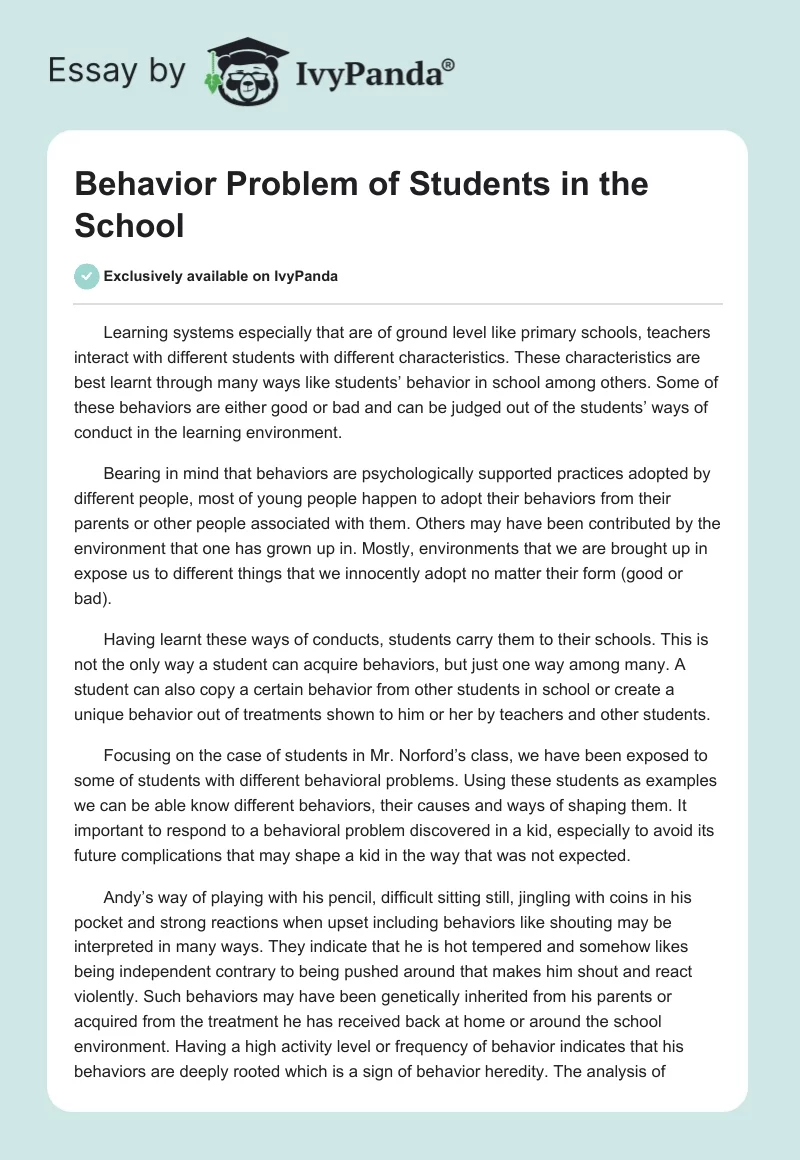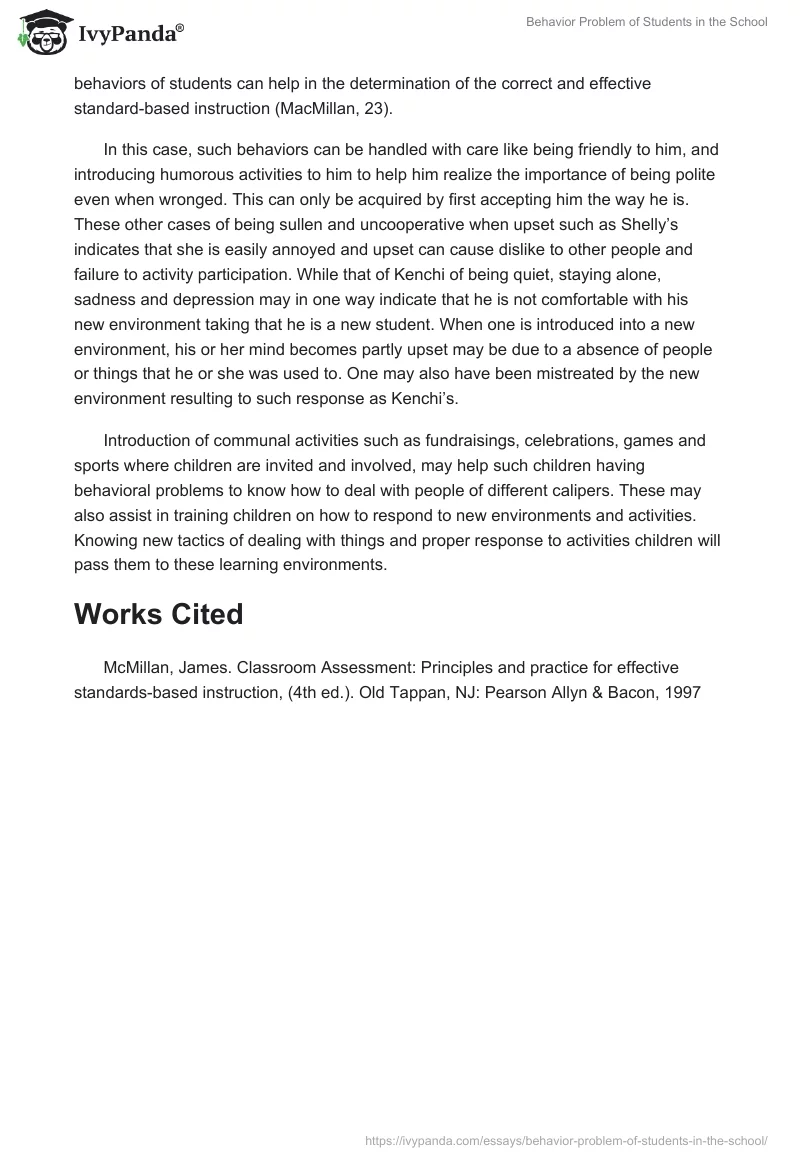Learning systems especially that are of ground level like primary schools, teachers interact with different students with different characteristics. These characteristics are best learnt through many ways like students’ behavior in school among others. Some of these behaviors are either good or bad and can be judged out of the students’ ways of conduct in the learning environment.
Bearing in mind that behaviors are psychologically supported practices adopted by different people, most of young people happen to adopt their behaviors from their parents or other people associated with them. Others may have been contributed by the environment that one has grown up in. Mostly, environments that we are brought up in expose us to different things that we innocently adopt no matter their form (good or bad).
Having learnt these ways of conducts, students carry them to their schools. This is not the only way a student can acquire behaviors, but just one way among many. A student can also copy a certain behavior from other students in school or create a unique behavior out of treatments shown to him or her by teachers and other students.
Focusing on the case of students in Mr. Norford’s class, we have been exposed to some of students with different behavioral problems. Using these students as examples we can be able know different behaviors, their causes and ways of shaping them. It important to respond to a behavioral problem discovered in a kid, especially to avoid its future complications that may shape a kid in the way that was not expected.
Andy’s way of playing with his pencil, difficult sitting still, jingling with coins in his pocket and strong reactions when upset including behaviors like shouting may be interpreted in many ways. They indicate that he is hot tempered and somehow likes being independent contrary to being pushed around that makes him shout and react violently. Such behaviors may have been genetically inherited from his parents or acquired from the treatment he has received back at home or around the school environment. Having a high activity level or frequency of behavior indicates that his behaviors are deeply rooted which is a sign of behavior heredity. The analysis of behaviors of students can help in the determination of the correct and effective standard-based instruction (MacMillan, 23).
In this case, such behaviors can be handled with care like being friendly to him, and introducing humorous activities to him to help him realize the importance of being polite even when wronged. This can only be acquired by first accepting him the way he is. These other cases of being sullen and uncooperative when upset such as Shelly’s indicates that she is easily annoyed and upset can cause dislike to other people and failure to activity participation. While that of Kenchi of being quiet, staying alone, sadness and depression may in one way indicate that he is not comfortable with his new environment taking that he is a new student. When one is introduced into a new environment, his or her mind becomes partly upset may be due to a absence of people or things that he or she was used to. One may also have been mistreated by the new environment resulting to such response as Kenchi’s.
Introduction of communal activities such as fundraisings, celebrations, games and sports where children are invited and involved, may help such children having behavioral problems to know how to deal with people of different calipers. These may also assist in training children on how to respond to new environments and activities. Knowing new tactics of dealing with things and proper response to activities children will pass them to these learning environments.
Works Cited
McMillan, James. Classroom Assessment: Principles and practice for effective standards-based instruction, (4th ed.). Old Tappan, NJ: Pearson Allyn & Bacon, 1997


